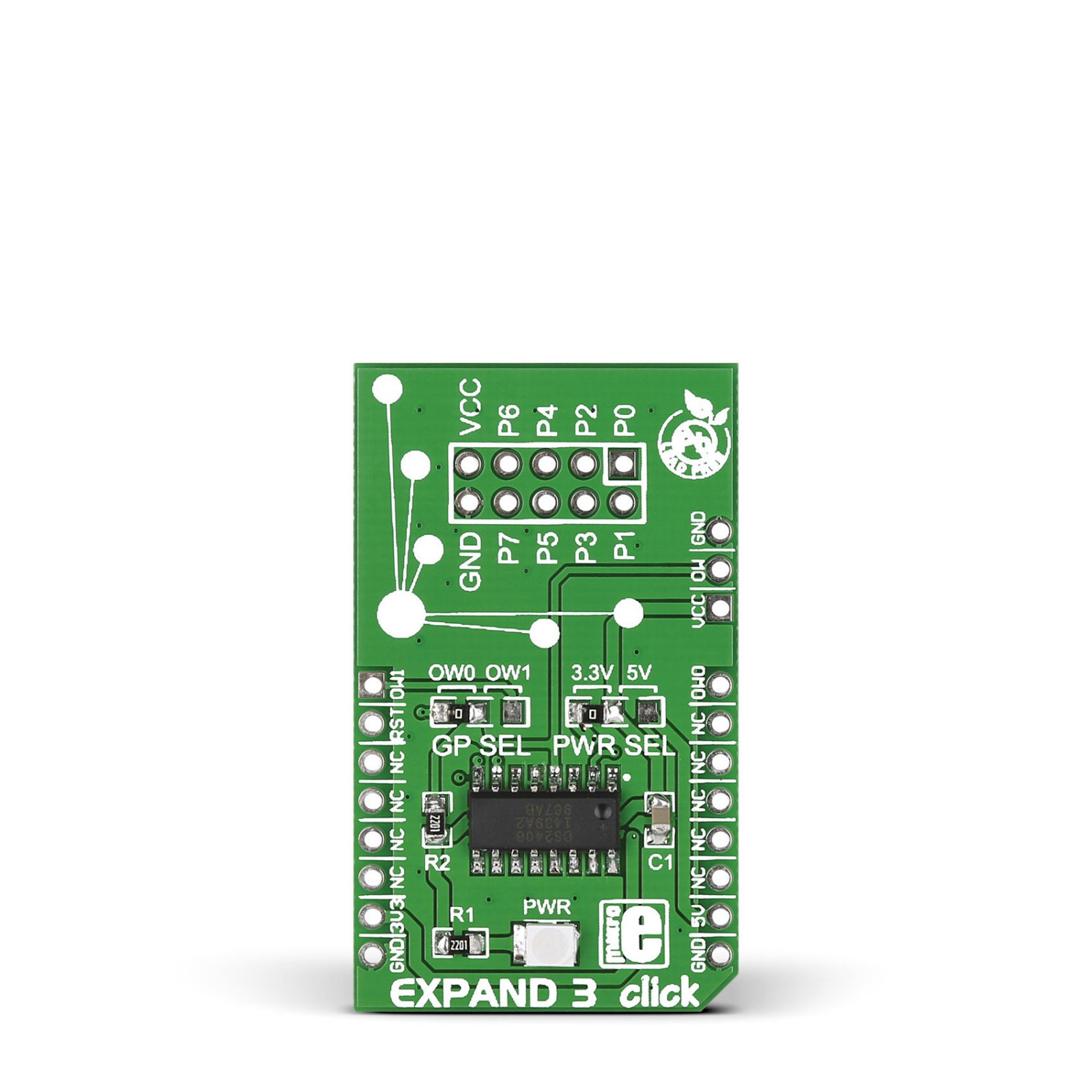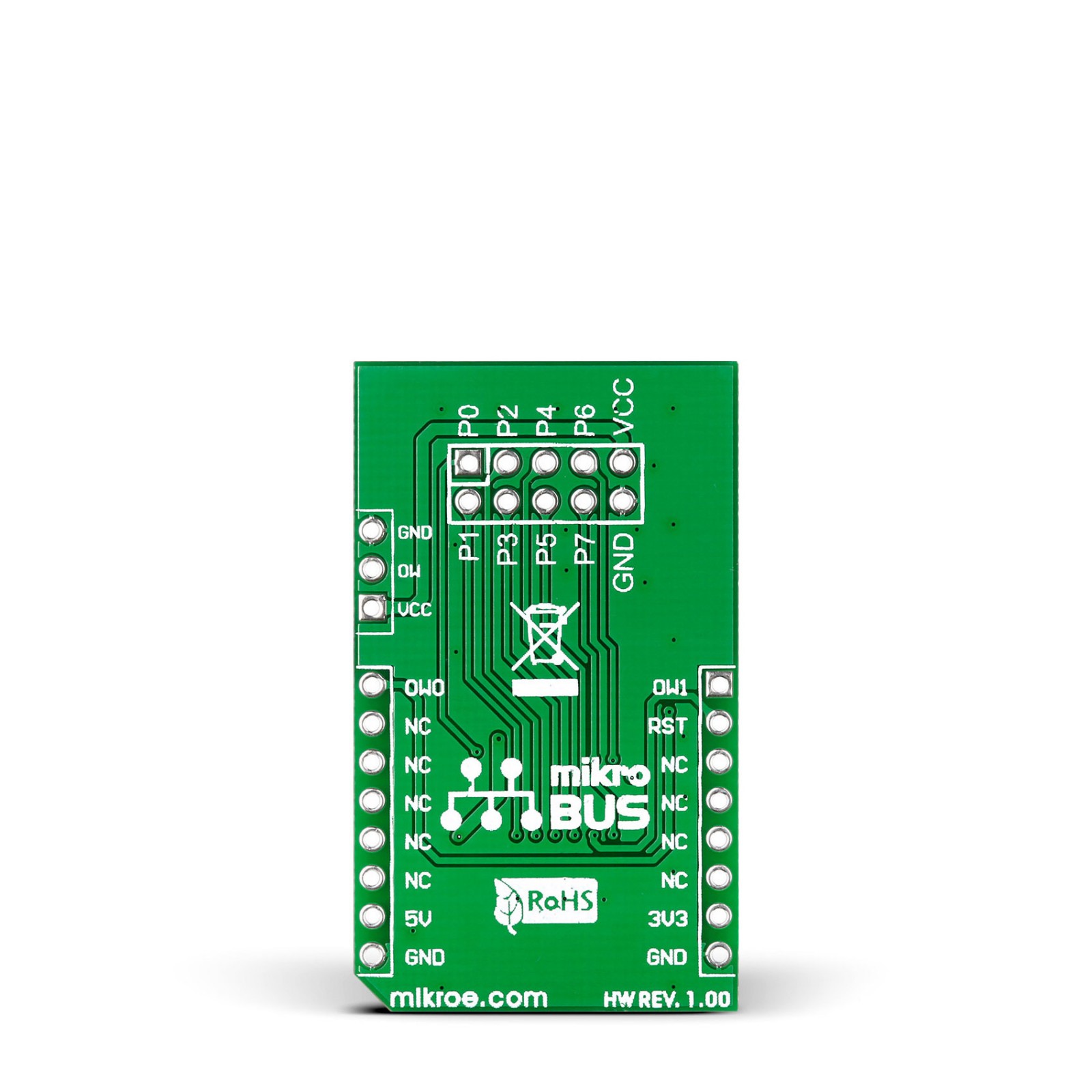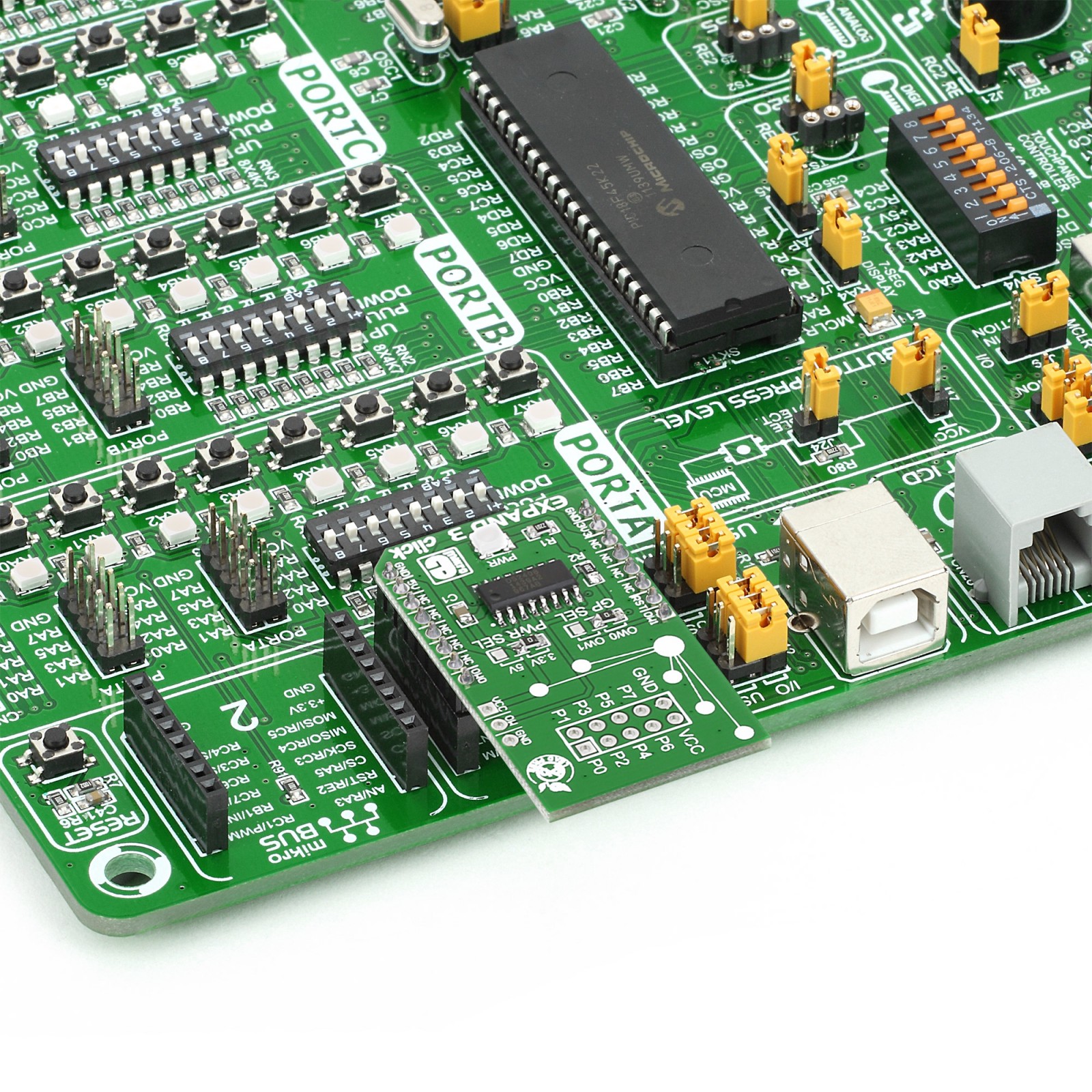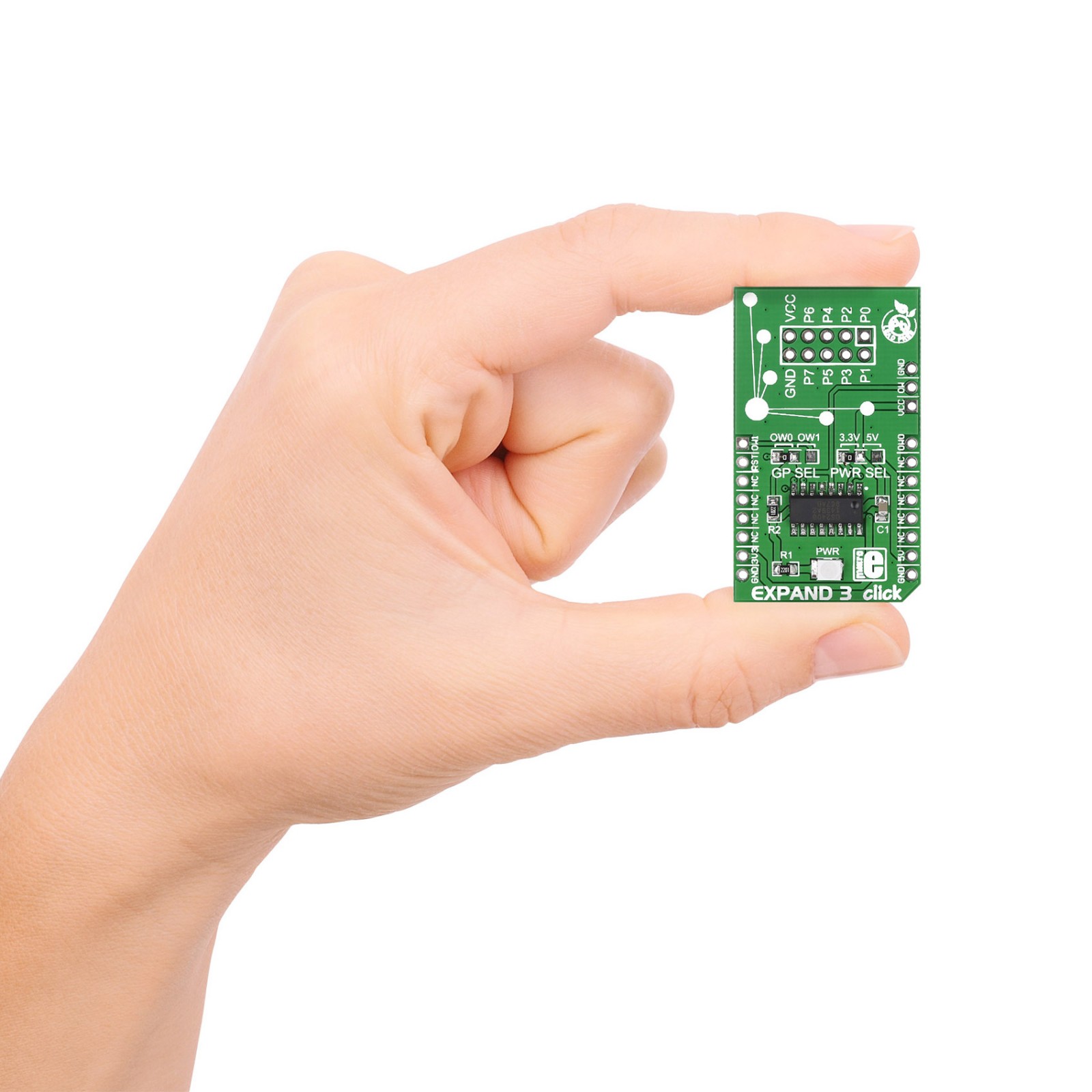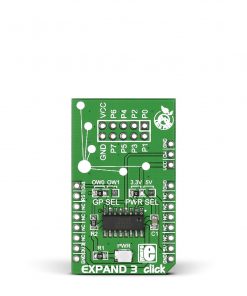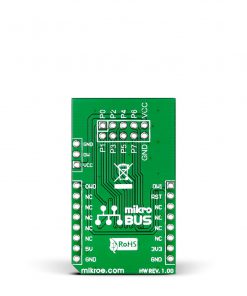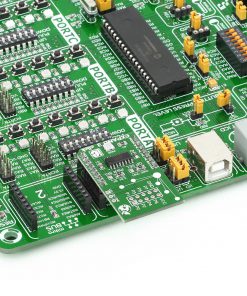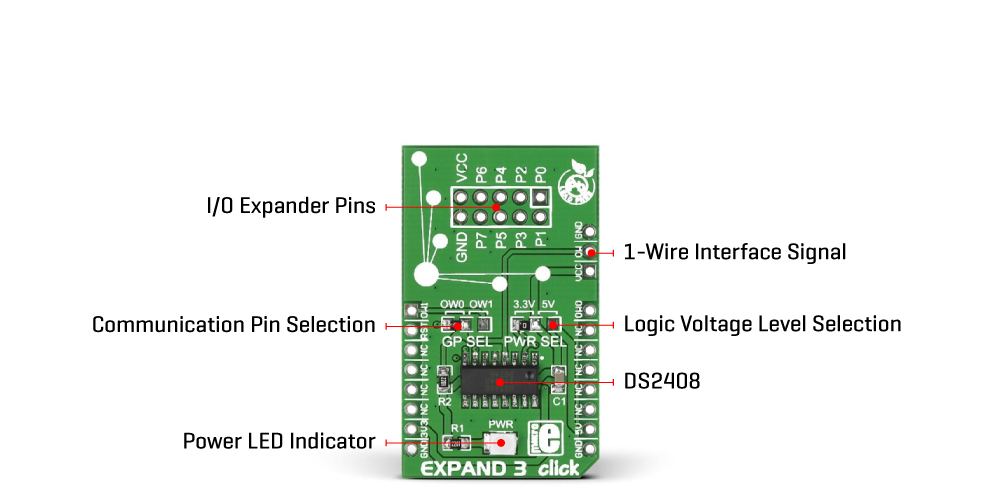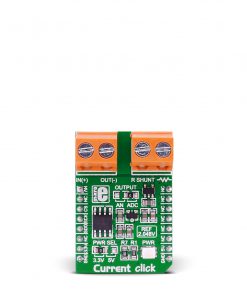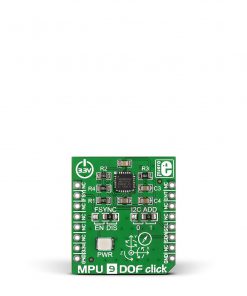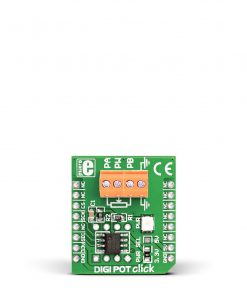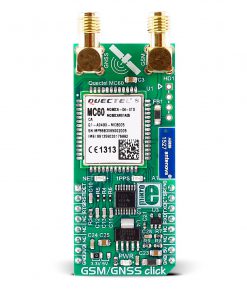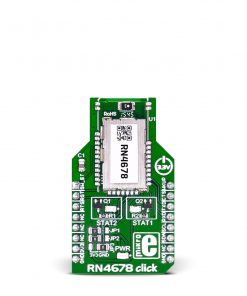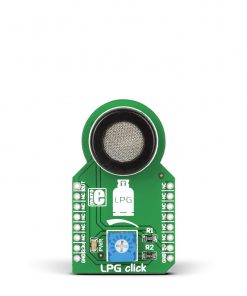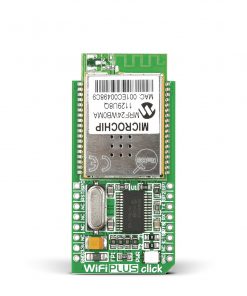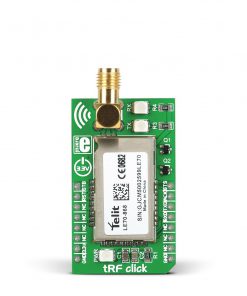Expand 3 Click
R445.00 ex. VAT
Expand 3 Click is a compact add-on board providing general-purpose I/O expansion. This board features the DS2408, an 8-channel programmable I/O expander from Analog Devices. The DS2408 has a factory-lasered 64-bit registration number, enabling multiple Expand 3 Click boards™ to be connected on the same data line, communicating with the host MCU through a standard Dallas Semiconductor 1-Wire interface (15.3kbps or 100kbps). PIO outputs are configured as open-drain and provide a maximum on-resistance of 100Ω. This Click board™ is suitable as a port expander for MCUs, remote multichannel sensor/actuator, communication and control unit of a micro-terminal, or as the network interface of a microcontroller.
Expand 3 Click is supported by a mikroSDK compliant library, which includes functions that simplify software development. This Click board™ comes as a fully tested product, ready to be used on a system equipped with the mikroBUS™ socket.
Stock: Lead-time applicable.
| 5+ | R422.75 |
| 10+ | R400.50 |
| 15+ | R378.25 |
| 20+ | R364.01 |

